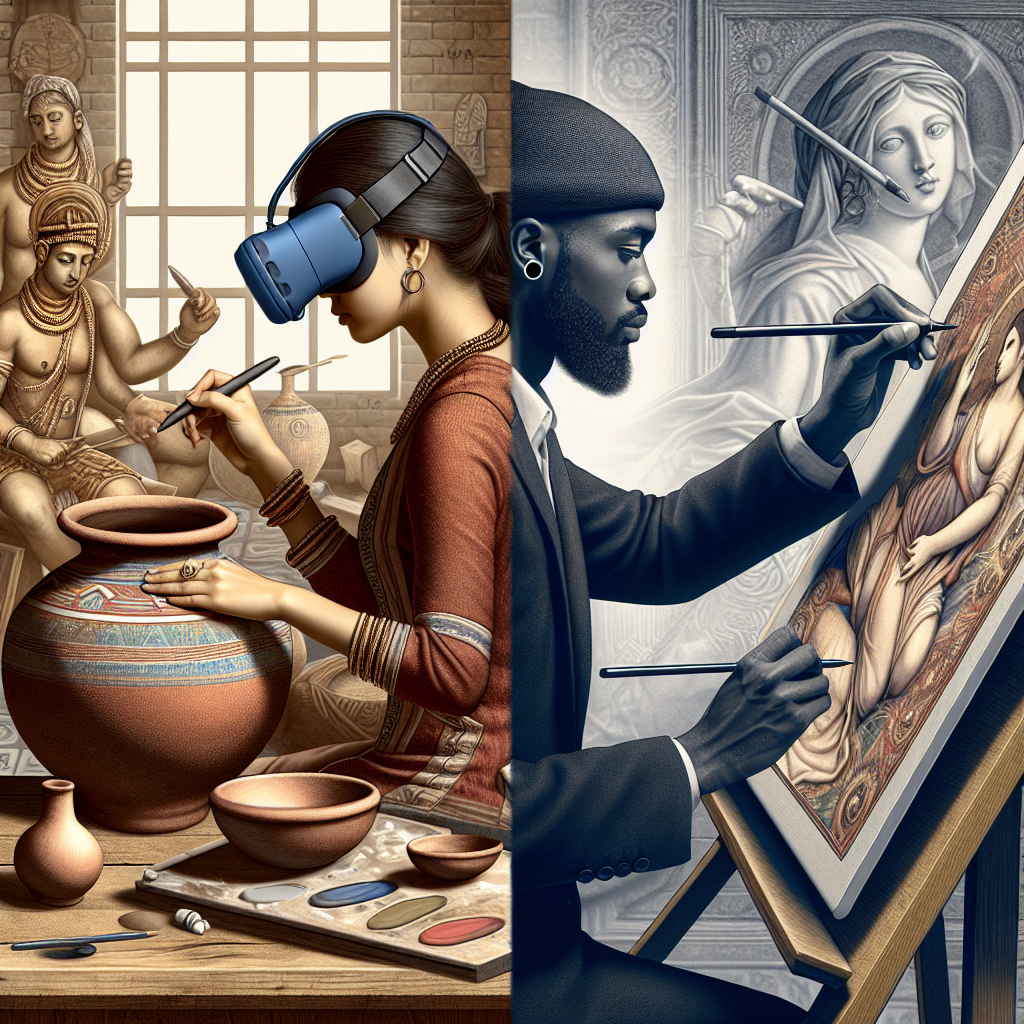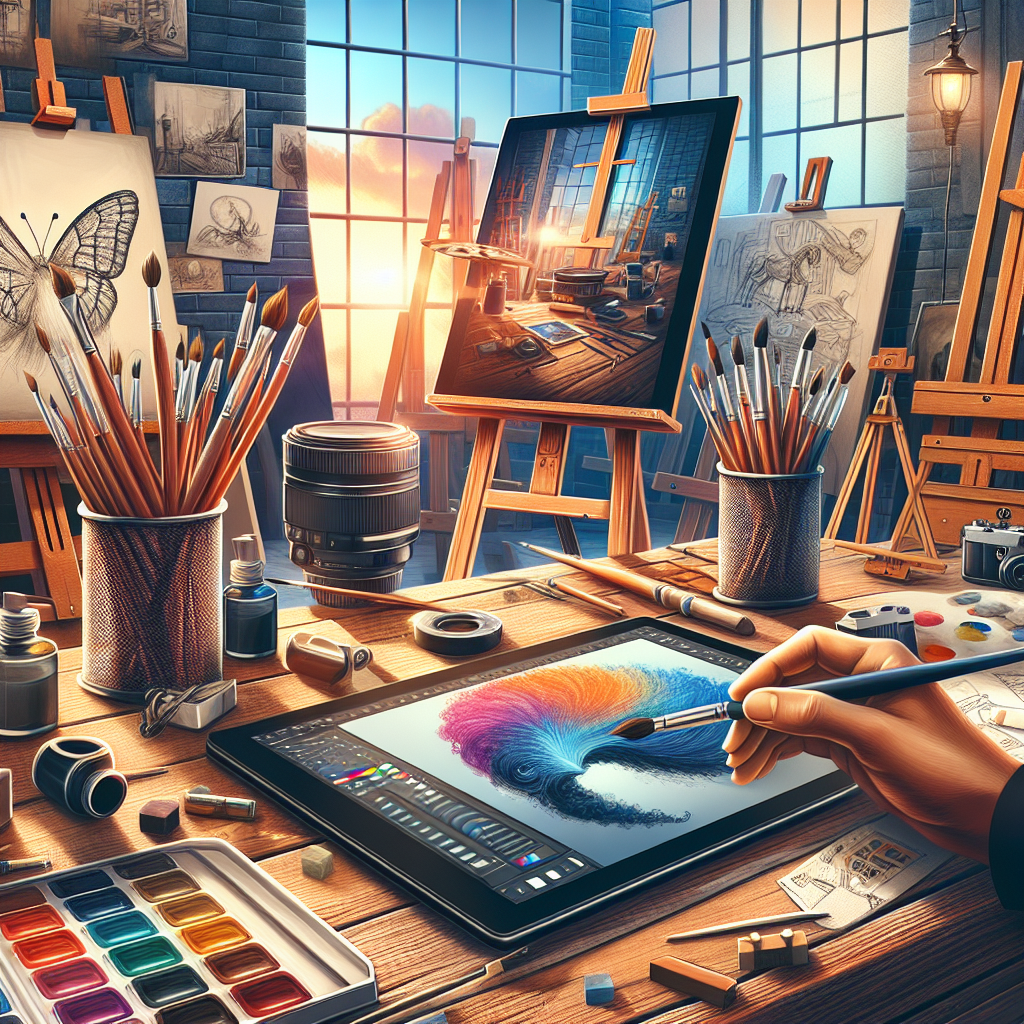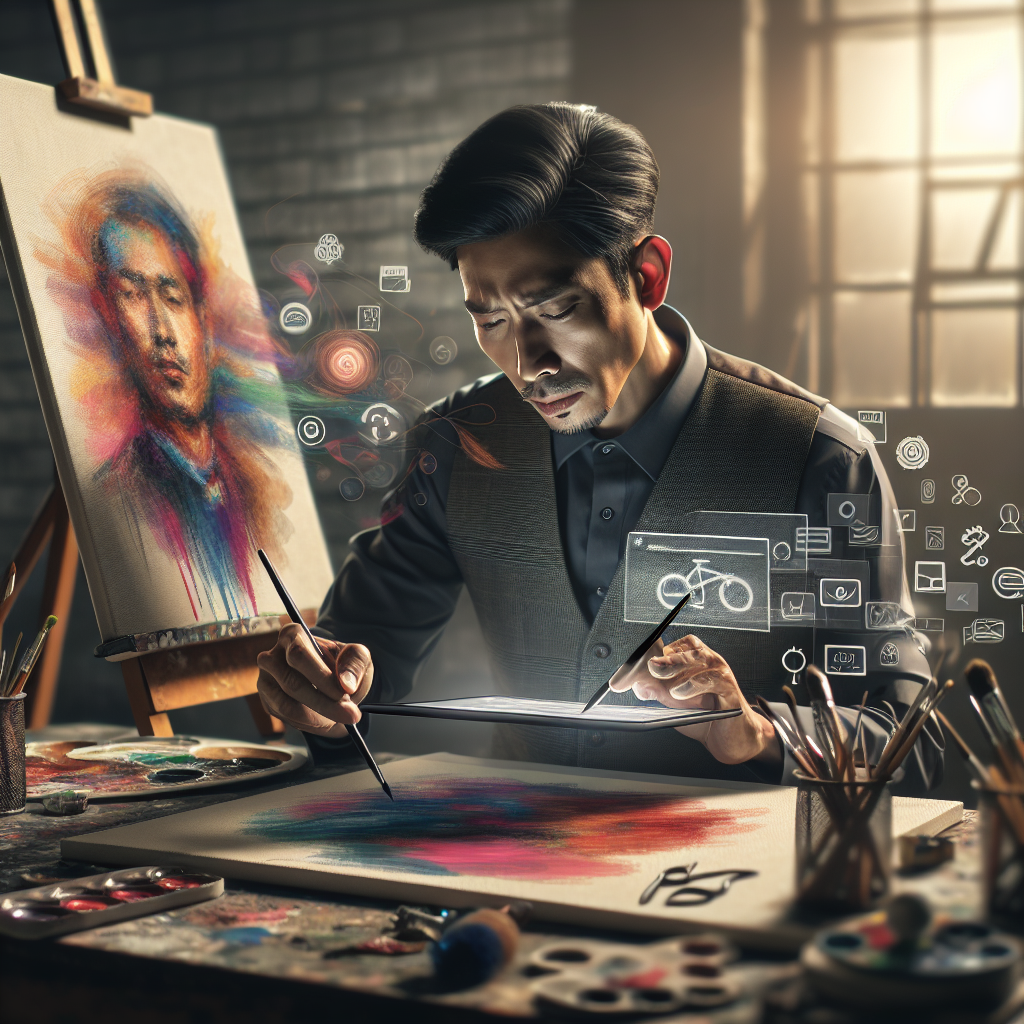
Art, as a mirror of society, has always been a powerful medium for expressing cultural values, societal norms, and individual perspectives. Traditional art forms, such as painting, sculpture, and literature, have played a significant role in preserving our heritage and telling the stories of our past. These timeless art forms have a certain allure that resonates with audiences across generations, evoking emotions and sparking contemplation.
However, in the contemporary landscape, we are witnessing a transformative shift with the integration of digital tools into the realm of art. The advent of technology has opened up new avenues for artists to experiment, innovate, and push the boundaries of creativity. Digital art, encompassing mediums like digital painting, graphic design, and multimedia installations, is redefining the traditional paradigms of art-making.
With the proliferation of digital tools, artists now have access to a vast array of resources that enable them to explore new techniques, styles, and forms of expression. The digital medium offers a dynamic platform for artists to blend traditional artistic practices with cutting-edge technology, resulting in a fusion of the old and the new.
Moreover, digital art has democratized the creative process, making it more accessible and inclusive. Artists from diverse backgrounds and geographies can now connect, collaborate, and showcase their work to a global audience through online platforms and social media channels. This interconnectedness has fostered a vibrant community of artists who are pushing the boundaries of art in exciting and innovative ways.
In essence, the integration of digital tools into traditional art forms is not about replacing the old with the new, but rather about evolving and expanding the possibilities of artistic expression. It is a testament to the enduring nature of art and its ability to adapt and thrive in a rapidly changing world. As we navigate this new era of creativity, we are witnessing a renaissance of artistic exploration that promises to redefine the boundaries of what is possible in the world of art.
1. Digital Painting: The Canvas of Tomorrow

Digital painting software allows artists to create masterpieces on a virtual canvas. With a myriad of brushes, textures, and effects at their fingertips, artists can bring their imagination to life with unparalleled precision and flexibility.
2. 3D Sculpting: Shaping the Future

Traditional sculpting meets modern technology with 3D sculpting tools. Artists can sculpt intricate designs in a digital environment, exploring new dimensions and pushing the boundaries of sculptural art.
3. Augmented Reality: Bridging Worlds

Augmented reality is a cutting-edge technology that has revolutionized the way we experience art. It seamlessly merges the physical and digital realms, allowing artists to transcend traditional boundaries and explore new creative possibilities. Through the use of specialized software and devices, such as smartphones or AR glasses, artists can superimpose digital elements onto the physical environment, transforming ordinary spaces into interactive and dynamic artworks.
One of the key advantages of augmented reality in art is its ability to engage viewers on a deeper level. By blending virtual elements with the real world, artists can create immersive experiences that captivate the audience's senses and emotions. This unique form of artistic expression not only challenges conventional notions of art but also opens up a world of endless possibilities for creativity and innovation.
Furthermore, augmented reality art has the power to democratize the art world by making it more accessible to a wider audience. Through AR apps and platforms, people from all walks of life can experience and interact with artworks in a way that was previously reserved for those who could visit museums or galleries. This democratization of art not only fosters greater inclusivity but also encourages a more diverse range of voices and perspectives to be heard in the artistic community.
In conclusion, augmented reality represents a groundbreaking shift in the art world, offering artists a powerful tool to push boundaries, engage audiences, and redefine the very nature of artistic expression. As technology continues to advance, the possibilities for AR art are limitless, promising a future where the line between physical and digital art is blurred more than ever before.
4. Digital Photography: Capturing Moments Digitally
Digital photography has transformed the way we capture and share moments. With advanced editing tools and high-resolution cameras, photographers can unleash their creativity and produce stunning visual narratives.
5. Animation: Bringing Characters to Life
Digital tools have revolutionized the animation industry, making it easier to create richly detailed worlds and lifelike characters. Animators can now craft intricate animations with fluid movements and captivating storytelling.
6. Digital Calligraphy: A Modern Twist
Digital calligraphy combines the elegance of traditional calligraphy with the convenience of digital tools. Artists can explore new styles and textures, breathing new life into this timeless art form.
7. Interactive Art Installations: Engaging Audiences
Digital tools have paved the way for interactive art installations that respond to the viewer's presence or input. These dynamic artworks create immersive experiences that captivate and inspire audiences of all ages.
8. Graphic Design: Redefining Visual Communication
Graphic designers leverage digital tools to communicate ideas visually. From branding to web design, digital tools enable designers to create compelling visuals that leave a lasting impression on viewers.
In conclusion, the integration of digital tools into traditional art forms is revolutionizing the creative landscape. Artists now have access to a vast array of tools and technologies that empower them to explore new horizons, push boundaries, and redefine art as we know it. The synergy between tradition and technology is giving birth to a new era of artistic expression—a revolution in the making.
Art has always been a reflection of society, culture, and individual expression. The integration of digital tools into traditional art forms is revolutionizing the creative landscape, empowering artists to explore new horizons and redefine art as we know it. This fusion of tradition and technology is not just a trend; it's a revolution in the making.
Comments